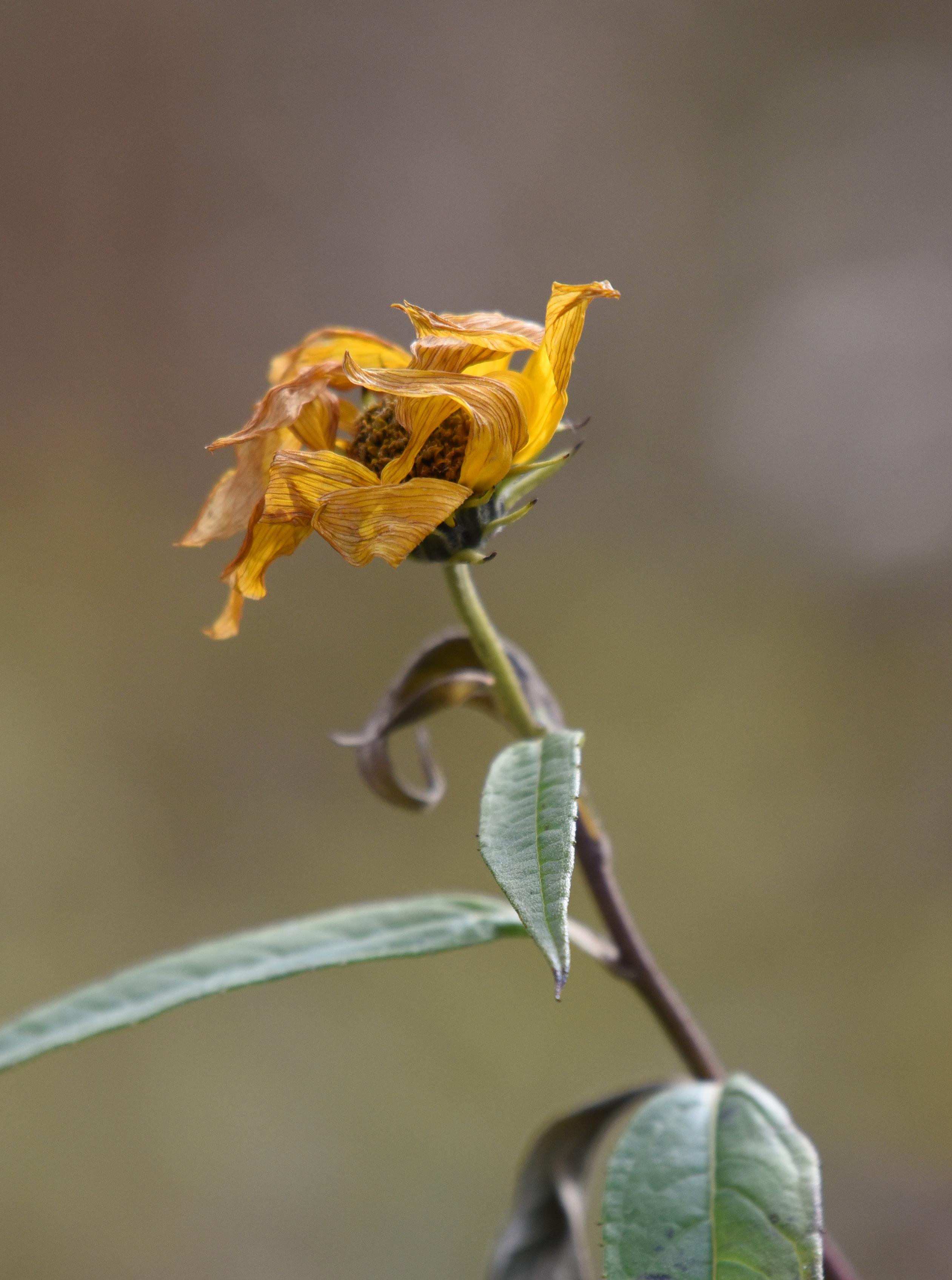
2023 Nature School Page 4 Important Trees Page 5 Sky Symphony Page 8
panorama Fall
HELEN BOOMSMA Executive Director
Welcome to the glorious fall season! Enjoy the rustling leaves as they undergo their yearly change, bursting into reds, oranges, and yellows. Observe the incredible activity of final fall bird migrants fluttering through the landscape, end-of-season prairie wildflowers displaying their final majesty, and mammals getting busy as they prepare for the cold.
In this issue of Panorama, read about three beautiful and ecologically important trees species! Shagbark hickory, ironwood, and hackberry dot our landscape, nurturing animals and birds with food and shelter. Learn what species you will find on a fall hike on the Center’s trails and about the spectacular sights in store for viewers of this season’s night sky. Discover the variety of ways our Nature School (formerly Nature Preschool) offerings are both fun and educational, and help students get ready for their future education. Find out about the beautiful eagle bench honoring the founder of our Raptor Program.
Next time you are at the Center, be sure to stop by the rain garden just east of our Visitor Center. An accessible boardwalk, generously made possible by donors Gayle Rosemann and Paul McElwee, has been recently added and will act as the main entrance to our Central Wetlands Loop. Immediately outside our building’s front door, visitors get an up-close view of diverse raingarden flowers, including marsh marigold, blue flag iris, and cardinal flower. Over the past few months, the boardwalk has become one of our most popular photo locations for weddings.
There are plenty of reasons to visit this season, whether to take a hike, participate in a program, or attend one of our special events. Families are invited to come in costume to Species Spooktacular on Sunday, October 22, where they will learn about – and even meet – some of nature’s misunderstood animals. Two sessions have been expanded to three hours for more flexibility. The all-day festival format returns to Xtreme Raptor Day on Saturday, November 4. This one-of-a-kind event offers upclose and unforgettable encounters with our resident raptors – including owls, hawks, falcons, and Bald Eagles. More information and tickets can be found on our website.
When you visit, head to our Art Gallery on the second floor of our Visitor Center to view the exhibit “Fin/Feather/Fungi/Frog/etc.” by Milwaukeean JoAnna Poehlmann, who has been making art for over 60 years. Her work is centered on the natural world and the beauty and humor she observes in it. She creates graphite drawings, etchings, lithographs, watercolor, mixed media sculptures, and artist books. This exhibit runs through December 31.
You can now fuel up before or after a hike with flavorful, nutritious snacks thanks to a partnership with our friends at Outpost Natural Foods. Choose from a variety of bars, organic fruit sticks, and a selection of trail mixes, available for purchase in our Nature Store. In other store news, we’re going online! In the next few weeks, just in time for the holidays, you’ll be able to shop for our logo wear, raptor calendars, and trading card packs, stickers, and more custom items from the comfort of your home. Items will be shipped to anywhere in the US!
We hope to see you this autumn at the Center!
Admission
FREE admission to Members
Adult: $10 | Youth: $7 (ages 3 — 17)
2 and Under: Free | Military: $7
1111 East Brown Deer Road | Milwaukee, WI 414-352-2880 | www.schlitzaudubon.org
Hours Monday - Sunday | 8:30am-5:00pm
BOARD OF DIRECTORS
Officers
Benjamin T. Pavlik
President
Evan Kirkstein
Treasurer
Leia C. Olsen
Secretary
John Schaub
VP-Governance
Barbie Brennan Nelson VP-Development
Directors
Jane Bell
Joseph A. Camilli
Renee M. Clair
Amy Giuffre

Therese Gripentrog
Jonathan T. Luljak
Carrie Nichols
Jeff Rusinow
Past Presidents
John H. Kopmeier, Jr.
Philip R. Smith
Dennis L. Fisher
Terrence K. Knudsen
Thomas J. McCutcheon
Thomas B. Fitzgerald
Randolph H. Dean
Stephen F. Geimer
Thomas J. Drought
David K. Hoover
John S. McGregor
Margarete R. Harvey
Timothy J. Gerend
John Grunau
Aliah Berman
Shane Delsman
Director Emeritus
Dorothy K. Vallier (1910-2013)
CREDITS FOR PANORAMA
Director of Marketing & Communications
Nancy Quinn
Creative Lead | Design & Photography
Zoe Finney
Editing | Select Writing
Craig Mattson
Schlitz Audubon is an independent, locally supported partner of the National Audubon Society.
WELCOME Fall 2023 | www.schlitzaudubon.org 2
MELANIE ZIOLECKI Naturalist LIANE COTTELEER Naturalist
As the daylight begins to sneak away from us and the temperature starts to turn, autumn has settled in. The deciduous trees are painted in a kaleidoscope of reds, oranges, yellows, and browns and begin to blanket the ground. As those leaves fall from the canopies of the trees, our eyes catch glimpses of the animals who will stay at Schlitz Audubon for the winter.
You will be witnessing the transition to dormancy in all living organisms, whether you’re at the top of the tower, looking down into the water from our boardwalk, or in the woodlands hearing the rustling of the birds and mammals. You may observe the lily pads starting to turn a rusty red to absorb the shorter light wavelengths that will arrive in winter. The ponds will start to crystalize with ice and the frogs, toads, and turtles will begin their preparation for torpor, a period of lethargy spent in the mud, under the ice.
Traveling further into the autumn season, you will hear the sound of the American Crows filling the morning air, while Black-capped Chickadees stay to forage in the trees. As you hike the trails, Wild Turkeys may join you on fall afternoons and the Red-bellied Woodpeckers might be flitting from tree to tree, keeping your head swiveling. Fall plumage of the American Goldfinch will be a dull, pale yellow as a grayish plumage replaces the bright yellow they sported in the spring and summer. Having an irregular migration pattern, some will create permanent residence due to good food sup-
ply while others will take flight mid-fall for a short-distance migration. The male House Finch’s red chest and head has become a pale brown color, leaving only a hint of red under their eyes for the coming Wisconsin winter.
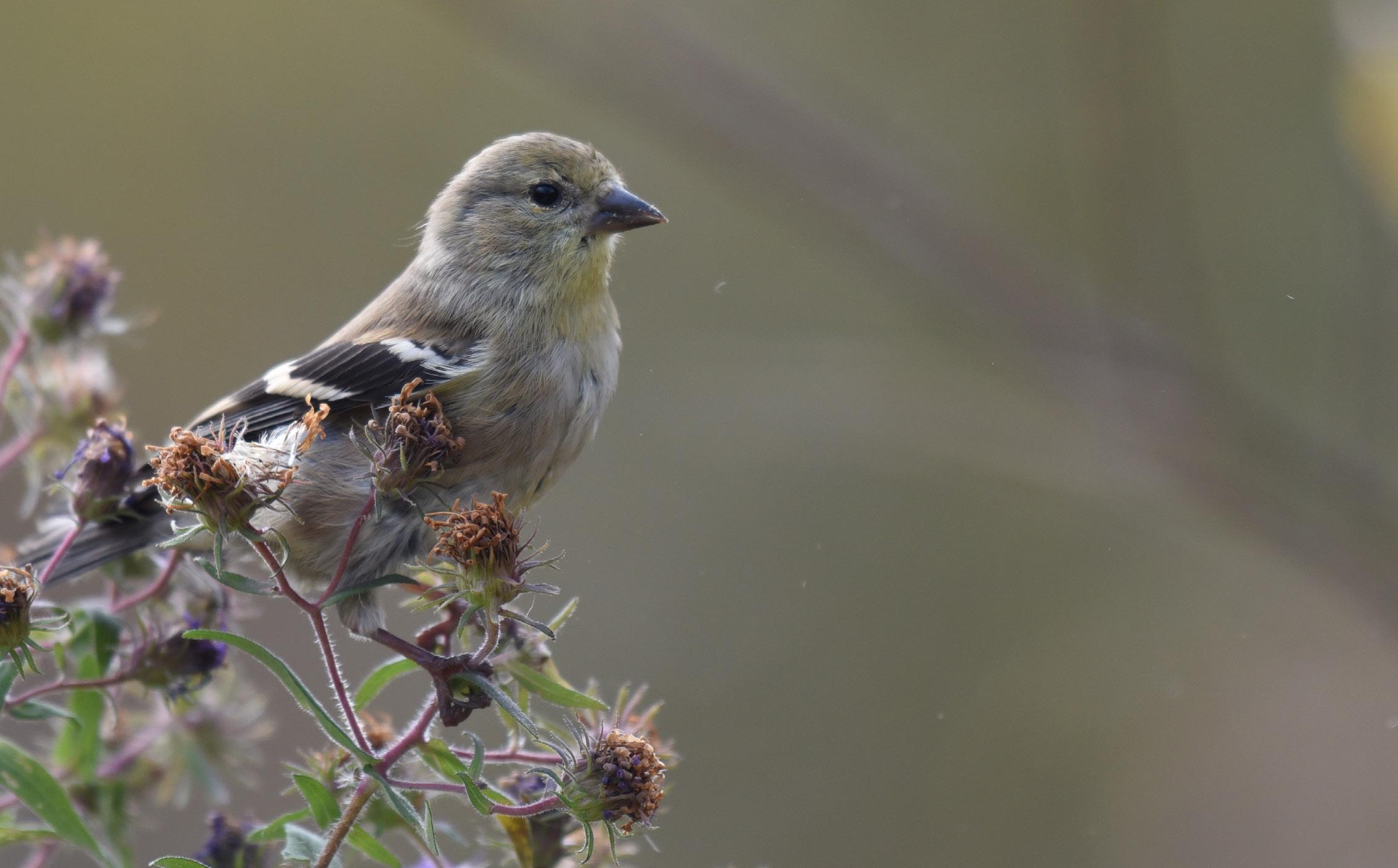
While the sun settles into the horizon, the Barred Owls, while unseen by visitors, will start to become restless in the twilight. The down feathers covering their feet help them maintain their residence at the Center through the winter. Under the cover of the nightfall, coyotes will roam the grounds, leaving tracks from their nightly treks for visitors to view in the daylight.
In late October, Dark-eyed Juncos will be spiritedly eating seeds at the bottom of our bird feeders, marking the first sign that winter is coming. As they are eating on the ground, you may catch a flash of red from the Northern Cardinal darting into view. Their bright red plumage pops against the bare branches, making them a staple sight in the colder months. Many animals will gather at the feeders to feast, including the red squirrel, gray squirrel, chipmunks, and the occasional eastern cottontail rabbit.
With daylight dwindling, we welcome you to visit the Center for a hike on the trails. Take in the autumn scerny, observing subtle changes that are taking place in plants and animals.
SEASONAL SIGHTINGS
3 Fall 2023 | www.schlitzaudubon.org See the fall transition at Schlitz Audubon!
American Goldfinch in fall plumage.
THE NATURE SCHOOL
Communications Specialist
Our Nature Preschool recently celebrated its 20-year anniversary, having spent two decades as a local leader in early childhood nature education. Because of our age-inclusive educational programming, we are in the process of changing the name of our preschool to Schlitz Audubon Nature School, with programs facilitated by our experienced early childhood educators. The Nature School is a space for babies, toddlers, and small children to learn and play, engaging in age-appropriate education. It includes an enhanced K4 program, a true pre-kindergarten class.
We enroll families, not just students, so the entire family is involved in a shared community experience using nature as a vehicle and teaching partner. We embrace social and emotional learning at all levels, with an emergent, child-centered curriculum versus a test-driven one. Teachers provide nature-based experiences that encourage curiosity, environmental connection, and empathy toward others, while supporting each child’s specific needs and abilities.
AUDUBON BABIES
At the beginning of our educational progression, infants aged 6 to 18 months in our Audubon Babies program are exposed to nature through the senses, by seeing, hearing, and feeling the wonders of nature up close. Introducing babies to nature with a trusted family member begins a process of developmentally appropriate learning. Playing outdoors and gaining tactile experiences by touching natural objects like feathers, fur, and rocks adds to a baby’s repertoire of sense knowledge. Using group exploration while learning about the environment with like-minded families creates a community gateway.
AUDUBON TODDLERS




In our Audubon Toddlers program, children aged 2 and 3 years also experience the joy of nature-based play with a trusted adult. Learning this way enhances brain development, creating neural connections as senses expand to accommodate the stimulation children find in a natural setting. The classroom encompasses sky, towering trees, grass and dirt-covered ground, and wind. Connection is created here, along with
sensory integration, and the development of large motor skills, including increased strength and balance by walking on trails.
NATURE PRESCHOOL
Nature Preschool offers mixed-age classes for children aged 3 – 5 years, where children in our Chickadee, Cardinal, Goldfinch, and Nuthatch classrooms grow through increased so cial engagement. Nature Preschool children begin to learn independence and interpersonal skills, developing a sense of community that includes the natural world. They use the magic of unstructured play to work through conflict, work as a group, spark curiosity, and self-exploration. They also learn empathy for plants, animals, and each other. The chil dren tackle tasks and learning when they are developmentally ready, creating building blocks for success in the future.
NATURE K4
Students aged 4 and 5 years in our Nature K4 program have authentic learning experiences through an inquiry-based curriculum using the phenology of the seasons and the children's own interests and wonderings. With experienced teachers as guides, the students learn how to learn and be curious about the world around them. We provide social and emotional learning that doesn’t happen sitting at a desk.
Our K4 students are connecting language, literacy, math, and science to nature-based experiences at the same time they are beginning to take steps to care for and protect the natural environment. Children gain fundamental skills through practice and by accomplishing appropriate tasks in the real world. This is done within a safe community, which in itself is an accomplishment of our students’ own initiative, achieved in concert with their supportive teachers.
Our Nature School strives to achieve all of the milestones for childhood learning and development with an established and proven system of nature education. These programs build on one another, offering an age-appropriate curriculum that takes into account the whole child. By choosing to educate babies, toddlers, and preschool children through K4, parents provide their children strong foundations that last well beyond childhood.
Fall 2023 | www.schlitzaudubon.org
How Trees STRENGTHEN Our Forests
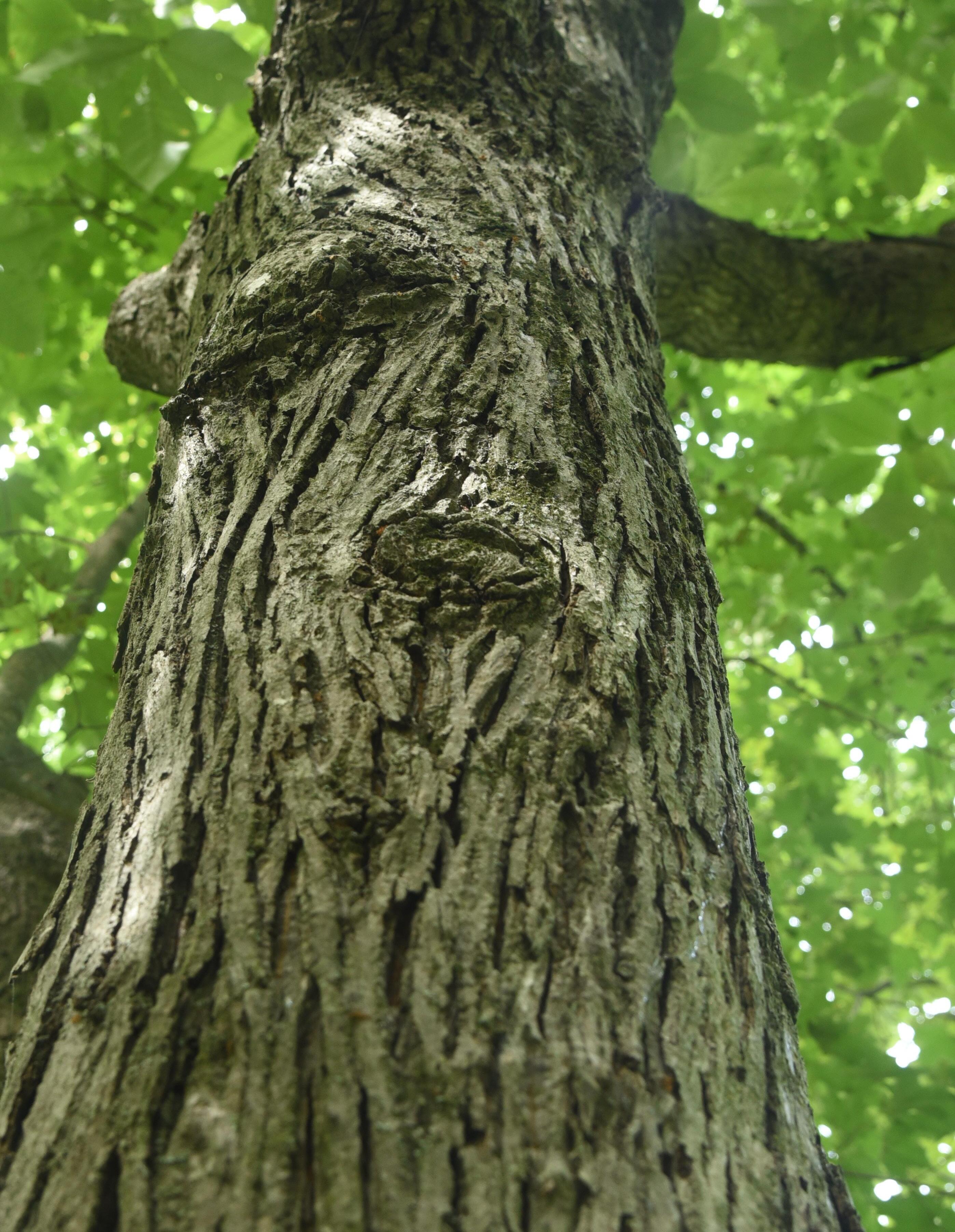
Examining Three Important Species
CRAIG MATTSON Communications Specialist
With contributions from Jacob Kempinski & Drew Shuster
FEATURE 5
Trees are beautiful to observe in all seasons, often with lush greenery in the spring and summer, and glorious, colorful foliage in the fall. They also provide necessary ecological services to the habitats in which they grow. Numerous types of wildlife thrive because of trees, making the forest a lively place to visit.
Schlitz Audubon is comprised of land cleared for farmingduring European settlement and is home to several forest habitats. Forests here include remnant old growth, classified as sugar maple-beech forests, which also include well-known species such as oak, basswood, and cherry. The Center also has mid-successional forests, containing fast-growing trees like paper birch and Aspens. Our hardwood swamp habitat hosts trees that favor wetlands.
Three tree species living in these habitats that are often overlooked are the shagbark hickory, ironwood, and hackberry. Each of these plays an important part in the proper functioning of the ecosystem. Good conservation practice is to plant diversity in a forest, which helps when invasives like the Emerald Ash Borer attack a particular species. All three of these species are native to the region and will grow well with our soils and hydrology. They are distinctive in their anatomy, offering a refreshing sight to visitors who encounter them. Drew Shuster, Director of Conservation, likes to think of each tree species as a color on a palette used to make a painting.
SHAGBARK HICKORY
Hike out near the pavilion and see a well distinguished species, the shagbark hickory, Carya ovata . This species is part of the hickory family and is identified almost exclusively by its impressive bark. The bark offers an aesthetically pleasing appearance, with asymmetrically descending, curving strips that cover the surface of the trunk, making it look shaggy.
It is a large, deciduous canopy tree that can grow as tall as 100 feet with
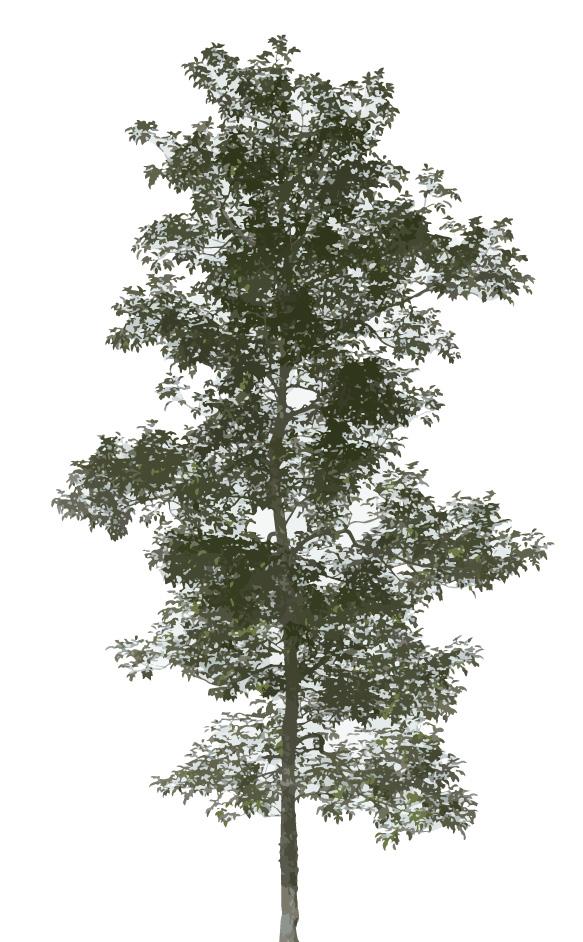
a spread of up to 60 feet. The foliage has five, and occasionally seven, pinnately compound leaflets with the largest one at the end of its stalk. The yel lowish-green leaves turn yellow to orange in the fall. The tree is nourished through taproots, likes dry or moderate soils, and can live in either full sun or partially shaded areas.
These hickory trees have many human uses, and were a food source for Native Americans, who harvested the nuts. The wood is hard, which historically made it excellent for making wagon wheels, and currently is used for tool handles. The shagbark hickory is plentiful at the Center - our conservation team plants it every spring, mostly in the Woodland Loop. Its range includes the eastern US.
Shagbark hickory is very important as a habitat for wildlife. It is a home to about 100 insect species, which feed on its bark, foliage, and plant juices. As a host plant for the caterpillars of two species of butterfly and many kinds of moths, including three for whom it is their sole food source, this species is indispensable. This insect-friendly tree creates a food source for birds, who feast on the many insect species that live on it. Birds attracted to this tree include warblers, tanagers, flycatchers, gnatcatchers, and vireos. Other animals find shelter in the shagbark hickory, including bats and small mammals, who nest in it.
The hickory nut that grows on the shagbark hickory ripens in the fall and is a nutrient rich food, though it takes the tree 40 years to grow them. They are eaten by Blue Jays and Red-bellied Woodpeckers, as well as birds found north of the Center, including bobwhites and pheasants. Mammals that eat their nuts are squirrels, raccoons, rabbits, and foxes.
IRONWOOD
The ironwood tree, also known as American hop hornbeam, Ostrya virginiana , is a member of the birch family. See one located close to the Visitor Center near the bike rack, as well as some near the Pavilion and near the North Ravine. One of this tree’s primary features is its fruit,

FEATURE 6 Fall 2023 | www.schlitzaudubon.org
feet tall, making it a sub-canopy tree. While not the tallest tree, it is important to the structure of the forest as some birds prefer to nest lower than near the top of the canopy. In the fall the light green leaves turn yellow, orange, and red.
The ironwood tree has many human applications. Historically, people used the hard wood to make sleigh runners and tools, and still make fenceposts and tool handles from it. Native Americans used the inner wood to treat numerous ailments. Though it can be slow-growing, ironwood makes a great street tree. The conservation team planted ironwood as part of the Storm Water Wetland & Ravine Restoration Project, as it fit the habitat where restoration was taking place.
This tree species is widespread, found almost everywhere in the US east of the Mississippi and in some midwestern states east of the Rockies, growing in the same habitat as the shagbark hickory. It is a slow-growing tree that begins to mature in about 50 years and provides food and cover for squirrels and birds such as woodpeckers and nuthatches, who eat the nutlets. In the north, the tree provides food and shelter for pheasants, bobwhite, and Ruffed Grouse. At the Center, Wild Turkeys eat the tree’s buds in winter. The gnarled branches and jagged bark provide shelter for invertebrates, and it is occasionally a host tree for the caterpillars of red-spotted purple and Eastern tiger swallowtail butterflies, as well as several moth species. The abundance of insects makes the ironwood a great food source for insect-eating songbirds.

HACKBERRY
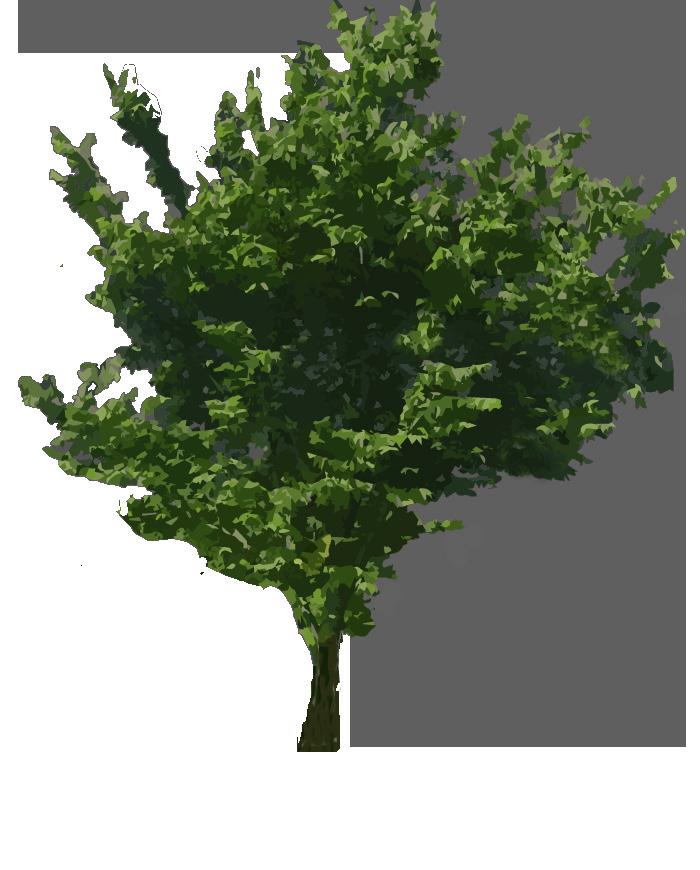
Look for hackberry trees, Celtis occidentalis, along the Terrace Loop and on the bluff near the Milner Deck. They are large deciduous canopy trees related to the elm tree, growing to about 100 feet tall or more, but size can vary depending on the region. Its range includes parts of southern Canada, and the eastern US east of the Mississippi and west to Nebraska. Visitors will distinguish this tree by its light brown to silvery gray bark, which has a corky, wart-like texture. It likes wet soils, but is adaptable, and lives in open areas in early successional forests south of the Wiscon sin Tension Zone. The yellow-green asymmetrical, ovate leaves are arranged in an alternate pattern on the slender branch and turn yellow in the fall.
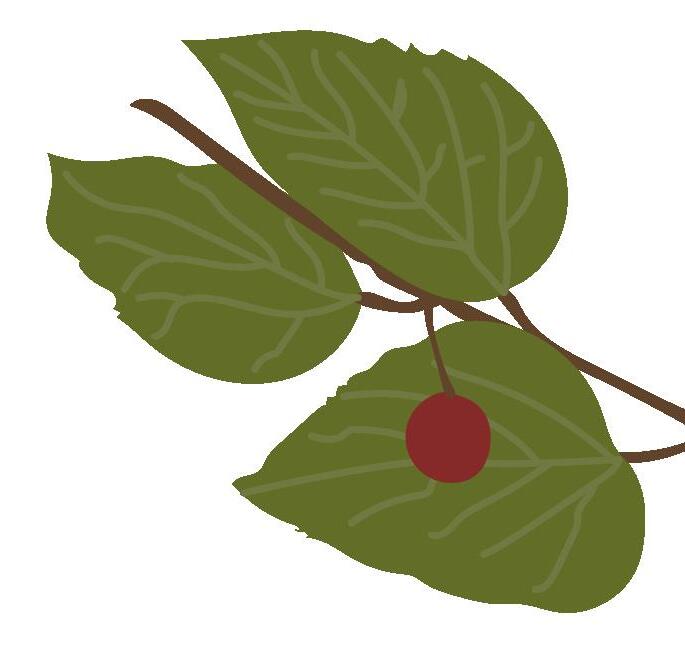

This species makes an especially good street tree, too. Native Americans sought hackberry as a food source, subsisting on the berries. The tree’s hardwood is used to make furniture and flooring. Our conservation team is planting this tree in the Hardwood Swamp as part of its restoration.
The hackberry is insect-friendly and is host to the tawny emperor and hackberry emperor butterflies. It attracts numerous butterflies and insects, making it a great tree for spring birds, such as migrat ing warblers and Gold en-crowned Kinglets. The tree’s valuable berries are rich in calories, and are high in fats, carbohydrates, and proteins. They ripen on the tree in Sep tember providing fall and winter food for birds, espe cially fall migrants. Cedar Wax wing, American Robins, Northern Flicker, and Yellow-bellied Sapsuckers all feast on the berries. Resident species such as Wild Turkeys and Northern Cardinals also turn to hackberries in winter, when food is scarce. The hackberry provides cover for white-tailed deer and small mammals.
Visitors to the Center can view these species all year, with shagbark hickory and ironwood occurring near the main building. If you enjoy a good fall hike, look for the hackberry near the Terrace Loop. These trees are appealing for their fall colors and are beautiful all year round.
FEATURE 7 Fall 2023 | www.schlitzaudubon.org
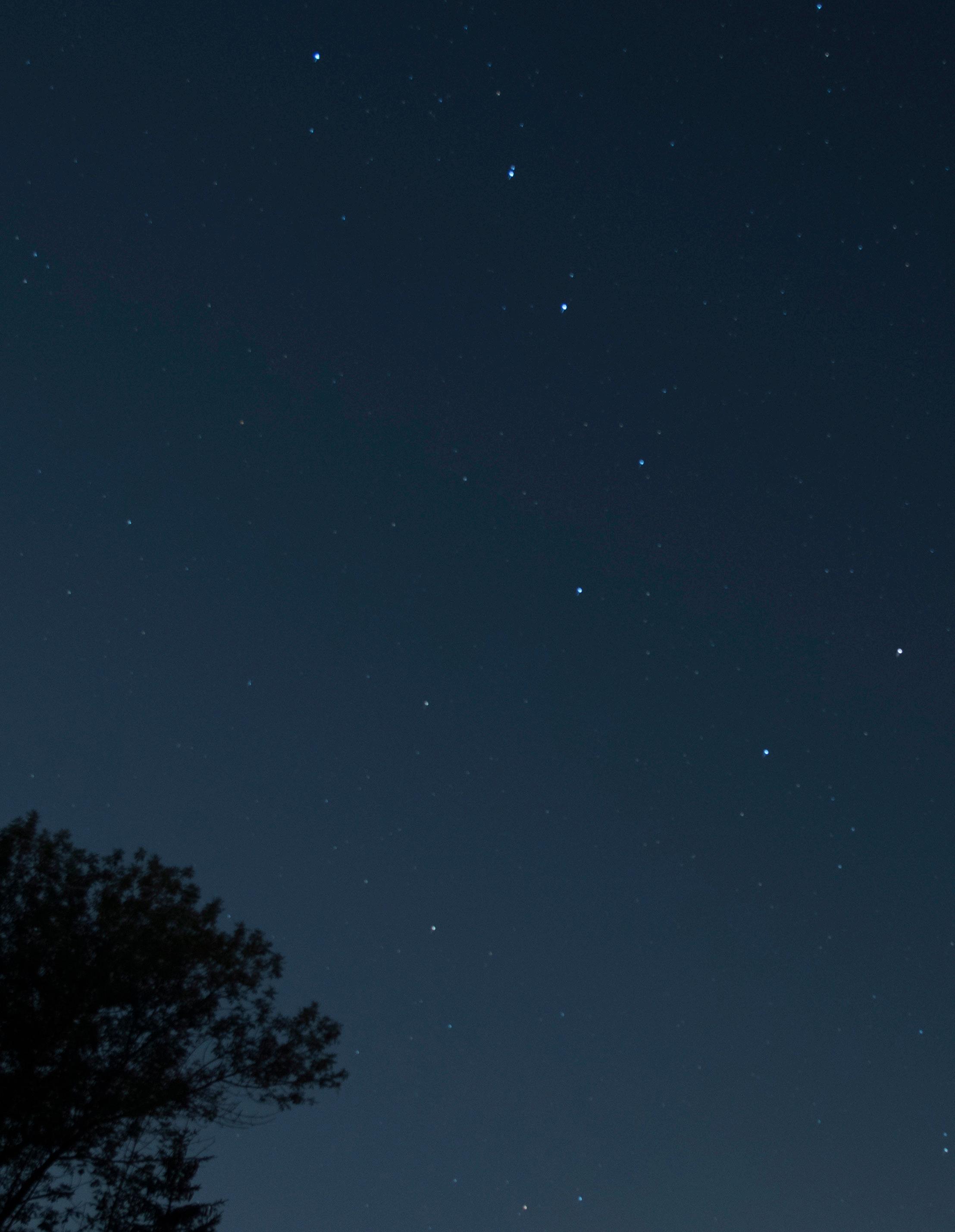

EDUCATION Fall 2023 | www.schlitzaudubon.org 8
SkySymphony
TOM FINLEY Director of Education
For centuries, people have looked to the sky for its beauty, wonder, and even inspiration. This fall, the autumnal skies will showcase several prominent meteor showers and one solar eclipse that will have many observers captivated.
An annular solar eclipse will take place on Saturday, October 14. A solar eclipse occurs when the new moon passes between the earth and the sun. The full lunar cycle lasts 29.5 days—the period between two new moons. During this time there are eight recognized phases, the first being the new moon, which isn’t visible in the daytime due to the intensity of the sun.
On rare occasions, when the path of the new moon passes exactly in the plane between earth and sun, an eclipse of the sun occurs. The October event is an annular eclipse— rather than total—because the moon will not completely cover up the sun. This is due to the moon’s distance from earth: the orbit of the moon is not a perfect circle and varies from 225,000 to 252,000 miles away.
In our area, we can expect 40% maximum sun coverage during this event, which begins at 10:37 am, peaks at 11:56 am, and concludes at 1:20 pm. The sun will still be far too bright for us to look at directly, which is never safe to do. It’s best to view this and any eclipse with the aid of trained sky observers with proper equipment. The most sun coverage will occur in areas of the southwestern U.S. and parts of Mexico, where nearly 100% obscuration happens. Impressively, there will still be a visible “Ring of Fire” around the sun at those locations —a dazzling sight.
There are also several prominent meteor showers this fall.
Meteors, sometimes called “shooting stars,” are tiny bits of cosmic dust and debris that enter the Earth’s atmosphere at very high rates of speed. Most meteors range in size from a pebble down to a grain of sand—hardly a star at all! When they travel in space, we call them meteoroids; while burning up in the atmosphere they are meteors, and if they reach the ground, they are termed meteorites.
Meteors can be random or periodic (predictable). Periodic meteor showers typically originate from comets that orbit the sun, just as the earth does. Comet tails leave debris in the path behind them, which the earth then moves through in the course of its year-long journey.
The Orionid meteor shower will peak October 21-22. We can expect about 20 meteors per hour if the skies are clear — best seen far from city lights. The Leonids meteor shower will peak at 10 – 15 per hour on November 17-18. These events get their names because they appear to originate from a particular location in the night sky—in these cases, the constellations Orion the Hunter and Leo the Lion.
The best display will occur December 13-15: the Geminids. These have a radiant from Gemini the Twins and are predicted to number an impressive 130 – 140 per hour! Visibility will be aided, since it coincides with the new moon of December 12. Interestingly, this shower is associated not with a comet, but with an asteroid named Phaethon, which is larger and made of rock.
Enjoy this delightful symphony of the sky and happy star gazing!


EDUCATION 9 Fall 2023 | www.schlitzaudubon.org
Bench Honors Raptor Program Founder
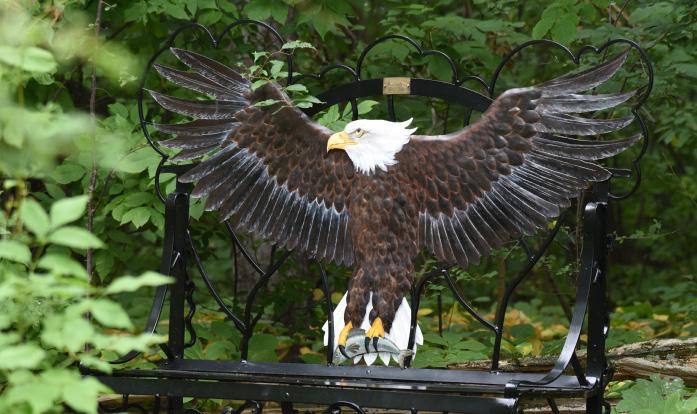
CARRIE BECKER Director of Development
Through a tangle of dogwood and wild plum, the glimpse of a Bald Eagle frozen in mid-flight pulls you in for a closer look. As you detour onto a winding semi-hidden, circular trail, this curious sight begins to clarify: The eagle is the backrest of an intricate wrought-iron bench, and it is clearly beckoning you to stop for a moment to bask in its glory. As you sit, you take in more details: the fish clenched in the giant raptor’s talons, and a plaque imparting the powerful message of “Spread Your Wings.”
Commissioned by an anonymous donor, the artistic iron bench pays homage to Diane Visty, the visionary founder of the Center’s Raptor Program. When Visty first joined the Center team as a naturalist in 1992, one lone Eastern Screech Owl lived in the original nature center building as an animal ambassador. Over the following 25 years, Visty expanded the program to a robust collection of 15 birds, who together with a staff of four employees and 42 volunteers today implement as many as 600 programs annually. Though Visty has since traded Wisconsin winters for Arizona sun after leaving the Center in 2016, her legacy still inspires visitors every day.
Forged by Milwaukee's own world-renowned blacksmith Tom Wilson and painted by local landscape artist Ann Powell, the
bench seems pulled from a fairy-tale setting. It provides a little bit of unexpected magic, and it is a fun counterpoint to the wooden structures that otherwise dominate the Center grounds. Awash with bold, life-like colors, the eagle boasts an impressive, life-size wingspread of 70 inches, begging for comparison with outspread arms. Each of the bench’s front “feet” are even true to their name: Each of the front legs rest upon clawed eagle talons.
Today, the bench is breathing new life into a semi-secret, serene pocket of trail. Circling the Green Tree Garden, dedicated nearly 50 years ago in 1976, the area once stood as an entry point to the original nature center building. Today it serves as a fun intermission point, where you can find hikers catching their breath after trekking up the paved hill from the lakefront and children spreading their arms to see how they measure up against the eagle’s impressive wingspan.
Next time you visit the Center, be sure to find the Eagle Bench on your own. The Green Tree Circle is located just south of the Tower parking lot, and very close to the south trailhead leading to Lake Michigan, the Tower, the Pavilion, or Mystery Lake. Sit back, savor the moment, and spread your wings!
10 DEVELOPMENT Fall 2023 | www.schlitzaudubon.org
In Memory Of Raptor Sponsorships
William B. Ardern
Mark & Jocelyn Brodd
John & Sandra Decker
Libby & Bill Hansen
Michael Levey & Linda Gorens-Levey
The McMinn Family
Jule Stroick
The Teitgen Family
Daniel & Linda Wilhelms
Robert Woycke
Bonnie Behee-Semler
Robert Amich
Ethel Mickey Bersch
Kathleen Glodoski
Kay M. Hahn
Kerri, Carrie, Jen, Pam, Catherine & Ashley
Patricia & Reuben Peterson
Paul M. Hauer
Mark Hauer
Victor J. Larson
R & E Baldauf Family Fund
Eric Furness & Chris Buth Furness
Mary Tonti
Elizabeth Revenaugh
Jean K. Stewart
Marion Trost
Margaret Lange
Edwin P. Wiley
Ted Wiley
In Honor Of
Tom Finley
Temple Brotherhood
Helen Johnson-Leipold
2023 Lake Owen Guests
Ms. Matthew’s Fifth Grade Class
Trella Boerschinger & Caroline Martell
Mike & Babs Mortl
Marcie & David Brenner
Nan Siebert
Martin & Cindy Kummer
Gimli – Eastern Screech Owl
In Honor of Laura Mark
Randolph Mark
Glory – Bald Eagle
Anonymous
Michael DeSisto
Susan Fink
Teresa & Steven Huyck
Gretchen Kensler
Jon Neubeck
Leonard & Dianne Stecklein
Mary Utschig
Ken & Barb Wardius
In Honor of All Who Save Injured Birds
Anonymous
In Memory of All Veterans that Served in the State
Dean Kozelek
In Honor of Anna Babcock
Sarah & Jason Babcock
In Honor of Ruth Bauer
Gary & Jilaine Bauer
In Honor of Grace Berrien
Elizabeth & Bill Berrien
In Honor of John Carroll
Maggie & Alexander Palutsis
In Honor of Donald Cotton
Barbara Brewer
In Memory of David Dahl
Gabrielle Dahl
In Honor of Michelle Darby
William Darby
In Honor of Clay Feller
Kris Collins
In Honor of Duke & Zane Gordon
Linda Rogge
In Honor of Finley, Amelia & Liam Johnson
Zachary Johnson
In Honor of Eileen Lisowski
Bryan Lisowski
In Honor of Lillian & Isadora Proite
Ellen Hing & Chris Leadley
In Honor of Axel Roen
John & Catrina Roen
In Honor of Hannah & Jacob Schneider
Kathe Gaarde
Loki – American Crow
In Memory of Arleen J. Klug
Jeffrey R. Klug
Nicco – Broad-winged Hawk
In Honor of Janice O'Connor
Megan O'Connor
Sky Walker – Red-tailed Hawk
In Honor of Elle Skulborstad
Eva Skulborstad
Tallulah – Turkey Vulture
In Memory of Hattie "Birdie" Eleanora
Joan Selk Herro
Michelle Herro
In Honor of Santos Quispe Villaverde
Randolph Mark
Valkyrie – Bald Eagle
Anonymous
Chris Carlson
Lynda Chevrier
Michelle Dluzak
Susan Fink
John & Lauren Focht
Sheila Larkin
Joe Meinecke
Bronwen Shaw
Sheryl St. Ores
Caroline VonAsten
Ken & Barb Wardius
Steve & Chris Weingarth
In Honor of Will Berrien
Elizabeth & Bill Berrien
In Honor of Ari & Brenna Jaffee
Mark Jaffee
In Memory of Jennifer Mattson
Catherine Regner
In Honor of Marla McNaughten
James Quirk
In Honor of Adam Westermayer
Kathryn Westermayer
Willow – Northern Saw-whet Owl
In Honor of David Pech
Jessica Pech
Zari – Great Horned Owl
Antony Ludwig
General Raptor Support
Anonymous
In Honor of Dayle Dieffenbach
Ken & Bess Dieffenbach
Gifts listed in this issue were received between 4/1/23 – 6/30/23
DEVELOPMENT 11 Fall 2023 | www.schlitzaudubon.org
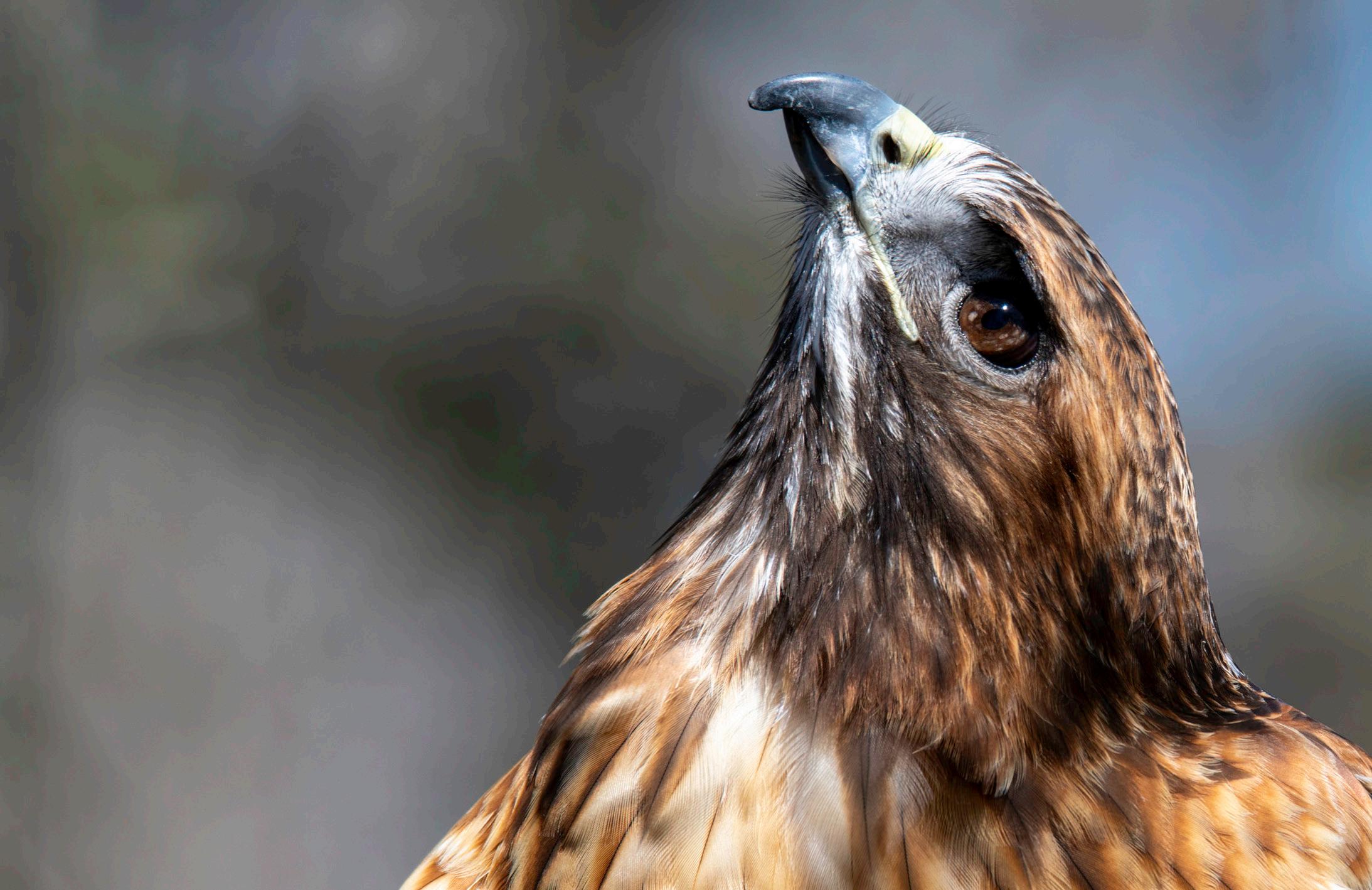

U.S. Postage PAID Milwaukee, WI Permit No. 4168 Schlitz Audubon Nature Center 1111 East Brown Deer Road Milwaukee, Wisconsin 53217 FALL 2023 PANORAMA Saturday, November 4 Join our annual celebration of all things raptor! Visit www.schlitzaudubon.org for more deatils




















